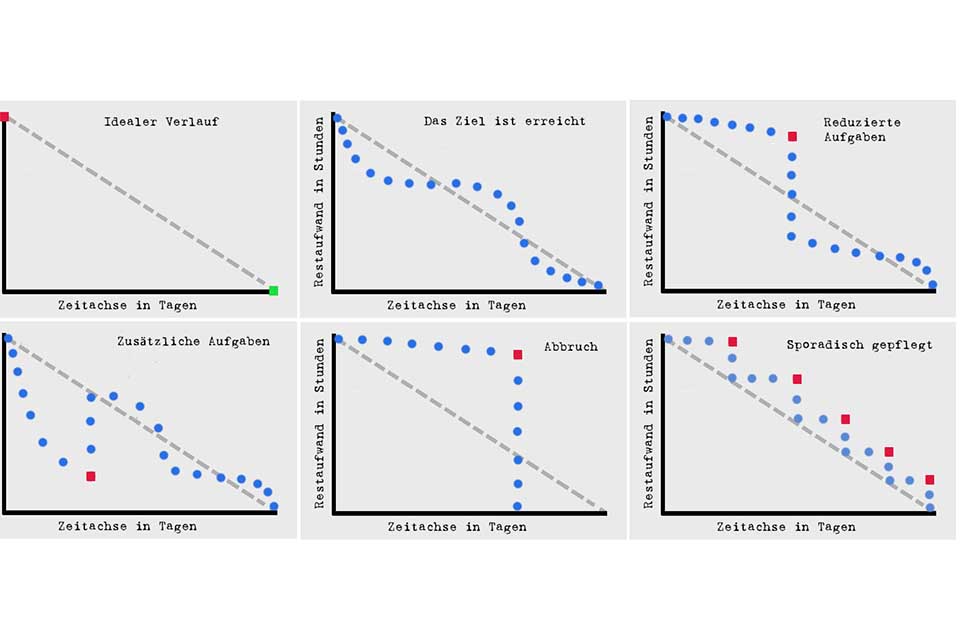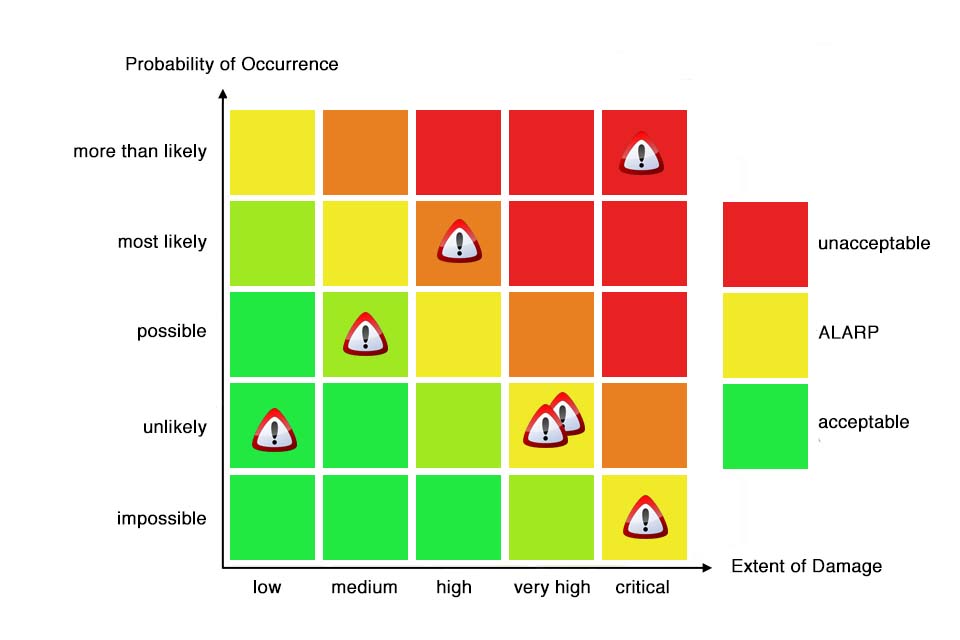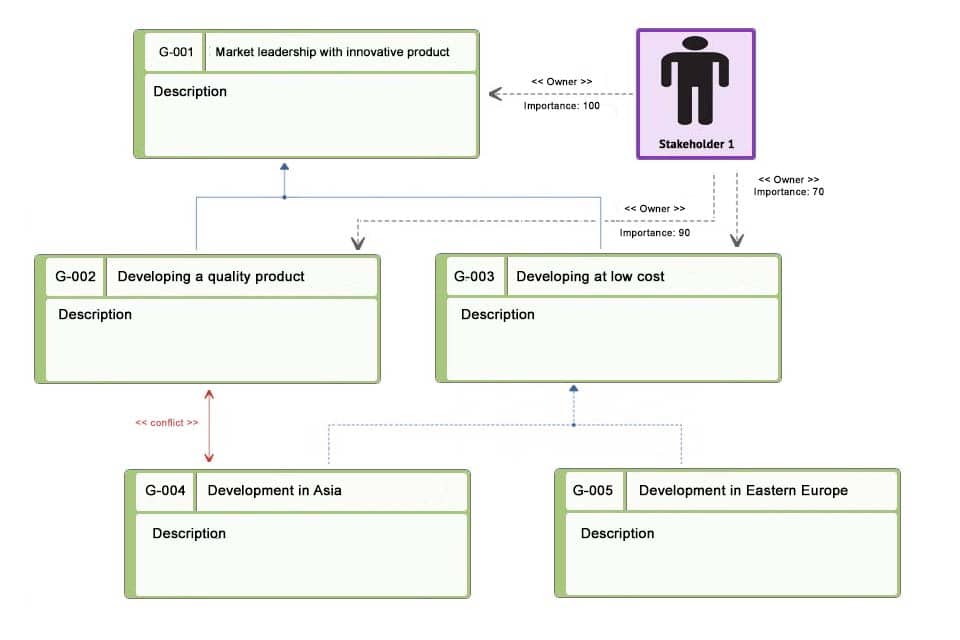What is a Roadmap?
Smartpedia: A roadmap is a visualisation of a path to a defined goal including essential features that influence the achievement of the goal along the way.
Roadmap – the visualisation of a path to a goal
A roadmap is a visual tool for presenting “essential” information in the course of projects or product and service developments. In business practice, it is often understood as a simple display that shows a path to a defined destination. Since the term is not standardised, it is up to the creators to define the essential information for the path to the objective themselves; it could be, for example, milestones, increments, features, outcomes, deliveries, contract components, etc.
As a tool, the roadmap represents a rough, sequential order of events and thus creates transparency in a procedure, ideally ensures an alignment of expectations, increases the common understanding of those involved and helps to align them with the objective.
Synonyms for roadmap
Even though the roadmap is easily understood as an orientation with a given beginning and a defined destination, it can be observed in many organisations that the term is replacing other terms. To put it kindly, this could be interpreted as “internationalisation” of language and/or development, somewhat less kindly as careless use of Anglicisms.
Here are a number of terms for which roadmap is used synonymously:
A schedule is a part of sequencing and is concerned with the scheduling of work packages or activities. Theoretically, a roadmap could include dates, but since the focus is on a description of the path towards the goal, this is not in itself a primary task. Nevertheless, some software solutions use the term roadmap to represent dates on a timeline.
A project plan contains the planning of a project in terms of content, structure, time, personnel and money. It consists of one or more consistent documents. Here, too, there is at best a selective overlap with a roadmap, because it usually includes neither personnel nor monetary planning.
A milestone plan shows the arrangement of milestones of one or more projects in chronological order, highlighting events of particular importance. Even though a roadmap usually does not define a timeline, a synonymous use of the terms could make sense, especially since milestones represent “essential information” on the way to the defined objective. This can be observed in software development in particular; both with reference to the provision of programmes with corresponding wording and in the use of the term in the course of development planning.
The release plan is a tool for scheduling and allocating functions to individual releases of a development. A release plan is thus something different from a roadmap, although releases in themselves can be “essential information” for visualising a product development.
The baseline baseline includes all the data to be planned for a project on a key date, e.g. work packages, employees, deadlines, efforts, and is approved by those responsible for the project. Here, too, there is only a slight overlap with a roadmap.
A sequence plan documents a planned project. It takes into account factual, logical and scheduling aspects, including the project goal, boundary conditions and results. This sounds like a conceivable overlap with the terms, although the schedule as such is usually not part of a roadmap.
It is conceivable that a vision or strategy, e.g. for the introduction of a new product on a defined market, with a scope of 3-5 years is visualised by means of a roadmap. In this way, the visualisation increases the common understanding of those involved and focuses on “essential information” such as the development phase, introduction phase, growth phase, maturity phase and degeneration phase.
An action plan specifies which activities are to be carried out when and in what order, with what effort, by whom and under what premises. Here, too, there is at best little overlap with a roadmap.
These examples show that the synonymous use of the terms may not always fit. Organisations should therefore agree on what they associate with the terms, where and when they use them, and what expectations they associate with them.
Advantages and disadvantages of a roadmap
Using roadmaps offers some advantages and also has some disadvantages. Here is a list of advantages:
- Roadmaps are easy to create and read. No special graphic skills are needed by the creators to draw them up, and in the vast majority of cases the readers will also quickly grasp the meaning of the visualisation.
- They can be easily used in many organisational areas such as product and service development, software and system development, innovation management, public relations, stakeholder communication, kick-off meetings, strategy workshops, etc. Accordingly, individual types such as product, technology or research roadmaps can be distinguished.
- They provide a good basis for communication, e.g. between contractor and client, between manufacturer and stakeholder, between project manager and project participants, etc. In addition, visualisation is also suitable for communication between governments and citizens, between governments, between associations and association members, etc.
- They increase both the transparency of an approach and the common understanding of those involved. And if there is a defined goal, it also facilitates the corresponding orientation of those involved towards this goal.
- And last but not least: they are suitable both for presenting the agreed path or goal and for developing it. It is therefore both a presentation and a working tool.
There are also some disadvantages:
- Since roadmaps usually visualise a rough path to a defined objective, the concrete information content is comparatively limited. More detailed plans are therefore practically always needed for individual stages. Especially in discussions with stakeholders, it is important to be able to access these plans quickly.
- The introduction as a working tool in an organisation requires a certain amount of preparation and, if necessary, discussion. Even if the actual visualisation succeeds easily, it should be clarified when the roadmap will be used by whom in which context and which other tool will no longer be used instead. A new, additional working tool does not in itself add value.
Of course, a roadmap is not a method that describes how to find the one way to the one goal. It is a tool for visualising the path to the goal. No more, no less. This “missing” methodology should not be considered a disadvantage, however, because otherwise all visualisations would have a corresponding disadvantage; a gantt chart also only shows deadlines and their dependencies, but says nothing about who set these deadlines and why.
Roadmapping Software
There are a number of tools available to help create roadmaps. Here you will find a small list:
Of course, the list can easily be extended, especially since there are numerous products that support roadmapping but originally have a different marketing focus, such as project management, product management or application lifecycle management.
Impulse to discuss
Is the roadmap more of a visual metaphor than a concrete planning tool? And: does the distinction between different types such as Feature Oriented, Goal Oriented, Theme Based, IT, Technology or Product Roadmaps make sense in practice?
Notes:
There is also the term roadmapping. Roadmapping includes all activities that are necessary to create and maintain a roadmap.
Here you can find a blog post called From Feature Roadmap to Outcome Roadmap.
And here a German podcast about Agile Product Roadmaps.
And a talk about Roadmaps are Dead! Long Live Roadmaps! by C. Todd Lombardo.
If you like the article or would like to discuss it, please feel free to share it in your network. And if you have any comments, please do not hesitate to send us a message.
And here you will find additional information from our Smartpedia section:



